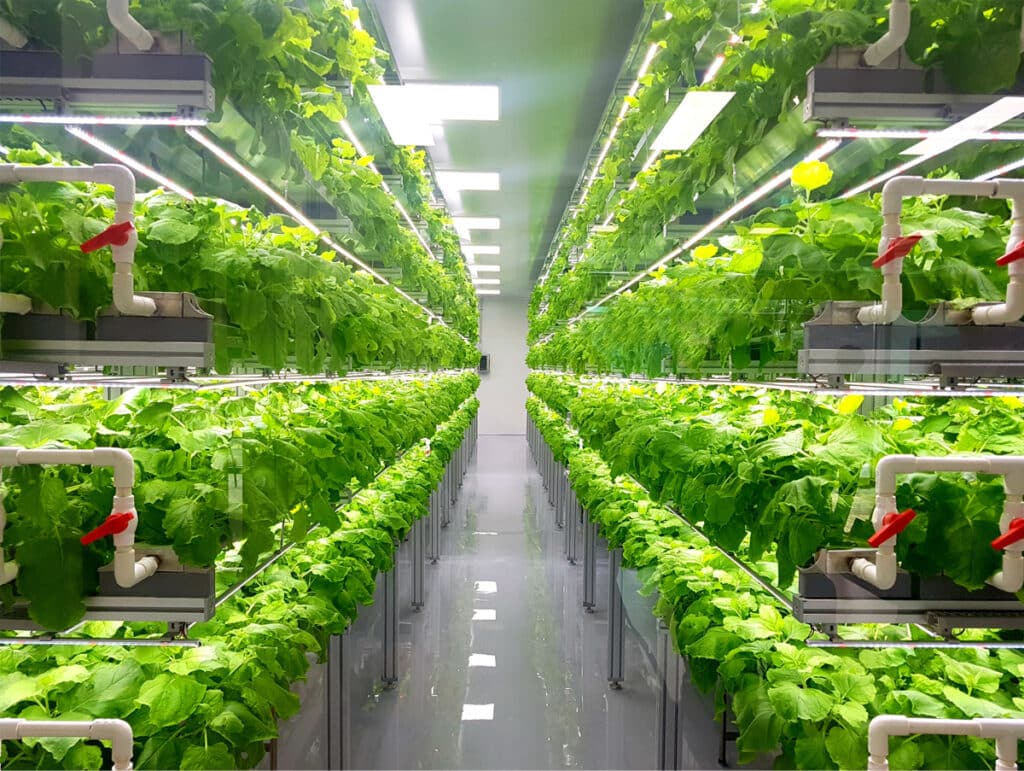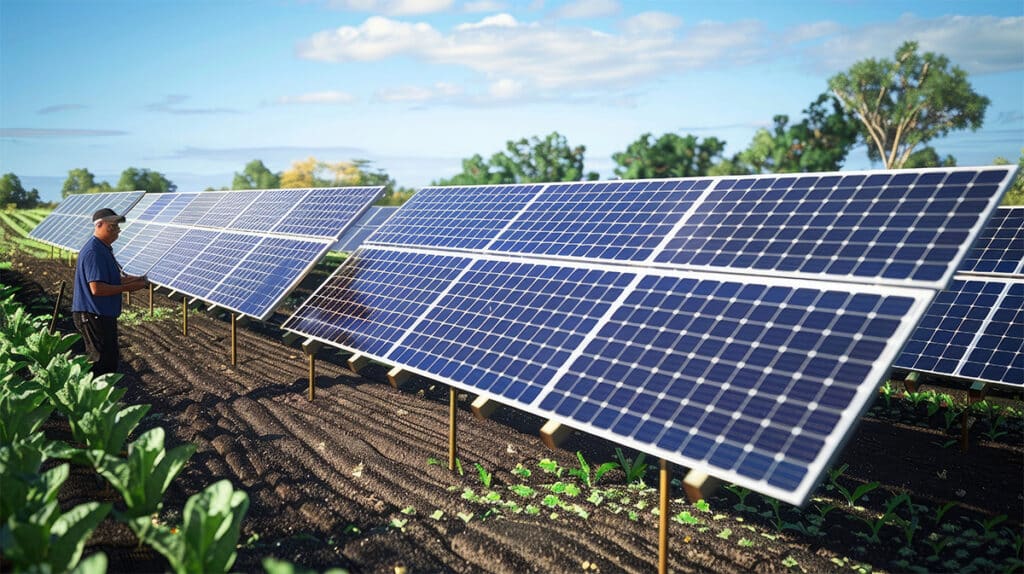According to the Food and Agriculture Organization of the United Nations (FAO), feeding a world population of 9.1 billion in 2050 would require raising overall food production by about 70 percent. That means in roughly 25 years, food production worldwide will need to be nearly doubled to feed the almost 10 billion people worldwide, where approximately 733 million people today are already going hungry.
Table of Contents
With the rising global demand for food, agricultural productivity must be maximized while minimizing environmental impact. Negatively impacting the environment will ultimately likely limit the availability of productive land and damage fragile and necessary ecosystems while subjecting local populations to exposure to dangerous pollutants and raising disease levels.
Agricultural technology (agritech) is just one component of global clean technology initiatives, but it is one of the most vital. This article looks at agritech advances within the scope of technology that minimizes pollution and environmental impact, that is, clean tech.
Global Agriculture Status & Trends
According to FAO, approximately five billion hectares of land are used for global agriculture, equating to about 38 percent of the global available land surface. About one-third of this land is used for cropland and two-thirds for meadows and pastures for livestock grazing. While food demand is rising, the cropland area per capita is declining: From 1961 to 2016, the cropland area per capita decreased by over half.3 This decrease is not a promising trend for rising global populations, and concerns about global food security exist. Additionally, legacy agricultural practices appear to be damaging the environment and reducing the availability of global resources for food production.
There is a clear need for positive change in the efficiency and sustainability of agricultural practices to feed the future. This new initiative, supported by governments worldwide, will make global agriculture clean and join the many other clean tech initiatives. A huge aspect of making a technology clean is to enhance efficiency, which directly affects the environmental impact of technology versus production—and agriculture is very much a human technology. With multifaceted efforts to make agriculture cleaner while enhancing efficiency, there is a bright future for agriculture and the global food supply.
Trends in Agricultural Clean Tech
Many aspects of agritech have followed legacy trends and perspectives that have prioritized yields over other factors. This has led to legacy agricultural technologies and practices that have drained arable land of nutrient content, requiring artificial nutrient additive measures. Moreover, these legacy practices have also involved using chemical pesticides and other disease-prevention methods that, though effective, have wider impacts beyond increasing yields by minimizing pests and disease. The production, distribution, and cleanup of these pesticides and disease-prevention methods also present environmental impact concerns that extend from raw materials production to application on farmland.
Agriculture equipment is another area that can be vastly improved with clean tech. Traditional agricultural equipment primarily uses internal combustion and fossil-fuel energy for operating equipment, transportation, heating, and processing. As these functions are generally high-energy-consumption activities, these aspects are a major contributor to legacy agriculture’s pollution and carbon footprint.
Sustainable Farming Methods & Precision Agriculture
More recent efforts in agriculture have emphasized the health and quality of soil over viewing soil as merely a physical substrate for a plant. There are more sustainable methods, such as regenerative farming, biointensive agriculture, and minimizing tilling. Other sustainable agriculture methods eschew using arable land entirely, such as indoor vertical farming, feed mills, aerofarms, aquaponics, and traditional greenhouses.
Regenerative & Biointensive Agriculture
Regenerative agriculture describes a myriad of farming and grazing methods designed to restore and improve soil health, water quality, and air quality. Many of these regenerative methods provide significant departures from current prevalent industrial farming methods. Examples include minimizing tilling or even eliminating tilling entirely. Though tilling may have some beneficial effects, it can also negatively impact soil structure, water infiltration/retention, erosion resistance, and root development. Cover cropping is also becoming more popular, increasing efforts to make it more efficient and profitable. The right combination of plant species, cover cropping, and crop rotation techniques can enhance the soil and disrupt pest and disease cycles.
Though cover cropping and crop rotation are not new practices, modern innovations include optimizing the plant species used not only for yielding the dominant cash crops but also to reach targeted soil health metrics and even combat specific pests. Some cover crop or crop rotation methods no longer require tilling or otherwise clearing the land before planting, and planting systems that knock over rotation crops or cover crops are used instead as a method of in situ composting.
Biointensive agriculture is another sustainable farming approach that aims to increase crop yields, soil fertility, and biodiversity by employing many regenerative farming methods and using all available land simultaneously and in coordination. Using a combination of traditional farming methods and greenhouses, raised beds, and other approaches helps combat pests while minimizing environmental impact, possibly with net positive environmental effects.
One such approach uses specific plant species to prevent pests and diseases, surrounding susceptible crops with plant species that deter specific pests. These methods can eliminate the need for pesticides while also contributing to soil health and other target goals, such as enhancing local bee and pollination insect life.
Indoor Vertical Farming, Aerofarms, & Aquaponics
One approach to optimizing the yield of available land area—and even using land that may not be conducive to growing crops—is using greenhouse or indoor growing methods. Where traditional greenhouses essentially mimic outside growing methods, many innovations in greenhouse or indoor growing technologies can achieve yields and crop quality beyond what is possible with outdoor methods. Additionally, greenhouse and indoor growing methods—such as vertical farming (Figure 1), aerofarms, and aquaponics—can largely protect crops from pests and disease, eliminating the need for pest control and disease-prevention methods that could impact yield and efficiency.

Vertical farming methods can allow for much greater yields per area and a greater diversity of crops grown in a given area. Aerofarms and aquaponics are potential enhancements over growing crops within the land by using engineered substrates, which may even be simple supports for the plants (such as in aerofarming) and nutrient-rich additives delivered directly to the plant’s root system as opposed to being sprayed on top of land. These approaches require generating nutrient-rich food sources for the plants, which can be done via aquaponics. This technique uses water cycled through aquatic animal environments to feed the animals and then extract nutrients processed by the animals in their waste to deliver back to the plants.
IoT Solutions for Agriculture, Farm Automation, & Electrification
Much like factory automation and other data-driven methods explored in industrial manufacturing, processing, and logistics, agriculture and farm applications are being augmented with hosts of connected sensors, information technology, robotics, and other automation systems. The Internet of Things (IoT) technologies employed vary from navigation and tracking sensors to more advanced sensor suites that can monitor the health of crops or livestock via visual or IR cameras, thermal sensors, electromagnetic sensors, radar, distributed soil health monitoring, or other methods.
Robotics and automated systems, such as autonomous mobile robots (AMRs), are being used to monitor crop and livestock health and activity more efficiently. Examples include using autonomous drones to perform regular flyovers of crops with cameras fed to real-time edge-processing systems or cloud machine learning (ML) and artificial intelligence (AI) services to monitor the vitals of crops and detect weeds and pests (Figure 2). Another example is the development of automated weed-elimination systems that can be mounted to farm tractors. These systems destroy weeds in their early stages by vaporizing the weed seedlings with a laser array. Similar systems are being developed for pest control as well.

These autonomous and distributed sensors must be paired with sophisticated software suites and data-driven management systems to benefit agriculture applications. With automated controls, farmers can be freed from much of the manual and time-consuming tasks and focus on quality optimization and innovation. For instance, some dairy farmers already use training methods for dairy cows to engage with automated cleaning and milking systems, where the dairy cows can choose when to be milked instead of being forced to conform to the time frames of dairy milkers. These systems have demonstrated better yields, higher dairy quality, and overall improvements to dairy cow health. Automated feeder systems for animals can already provide various feeds optimized for a specific animal or group of animals based on their present condition revealed by automated monitoring systems.
These same concepts can also be employed for early disease detection in crops or cattle, and with advanced ML/AI, some diseases can even be reliably predicted, allowing for preventative measures. In some cases, predicting and preventing disease is much more efficient and poses a lower environmental impact than treatment or suffering the loss of crop or animal productivity. Innovations in disease treatment, such as using acoustic pulse technology (APT) to treat bovine mastitis, can even reduce or prevent the use of antibiotics. Less antibiotic use helps to curtail the looming threat of antibiotic-resistant pathogens.
Some of these methods can be categorized as precision agriculture, which is predominantly a data-driven resource management strategy. An example is using real-time kinematic sensor systems for navigation that limit farming machine traffic to controlled lanes. This prevents unconstrained travel and harm to soil from compaction and other drainage and friability concerns. These data-driven methods can optimize water use, resulting in significant water savings and preventing overwatering, which is common to flood irrigation methods. Other new methods for watering include micro-drip irrigation and the use of processed wastewater to deliver nutrients and reduce the need for freshwater sources.
Most legacy farm equipment has used internal combustion technology for transportation and work machines. Additionally, natural gas and kerosene have long been used for heating applications. Even with electrical machine equipment, most electrical energy has historically been generated from fossil fuel sources and efficiently delivered via extensive electric grid infrastructure. Modern agricultural installations and farms are using wind and solar energy to reduce the reliance on fossil fuels and grid systems that are not always reliable or robust.
Using sustainable and local energy generation along with energy storage systems such as battery electric energy storage, flywheels, and salt batteries can substantially reduce the transmission losses of electrical energy and even make some agricultural installations energy self-sufficient. Using renewable energy sources, along with electrified agricultural equipment and systems, can dramatically reduce the carbon footprint and pollution generated during operation and significantly enhance the equipment’s efficiency and responsiveness. There are even instances of farmers using solar installations within the cropland to provide shade for crops that benefit from shade while generating renewable energy (Figure 3).4

Conclusion
Demand is soaring for sustainable and lower-environmental-impact innovations in agriculture. More efficient and less pollutive agricultural methods are good practices to minimize ecological and environmental harm and meet the rising demand for food from a growing world population.
- https://www.fao.org/fileadmin/templates/wsfs/docs/Issues_papers/HLEF2050_Global_Agriculture.pdf
- https://www.fao.org/newsroom/detail/hunger-numbers-stubbornly-high-for-three-consecutive-years-as-global-crises-deepen–un-report/en
- https://www.fao.org/sustainability/news/detail/en/c/1274219/
- https://www.ars.usda.gov/oc/dof/using-the-sun-to-produce-green-plants-and-green-energy/





